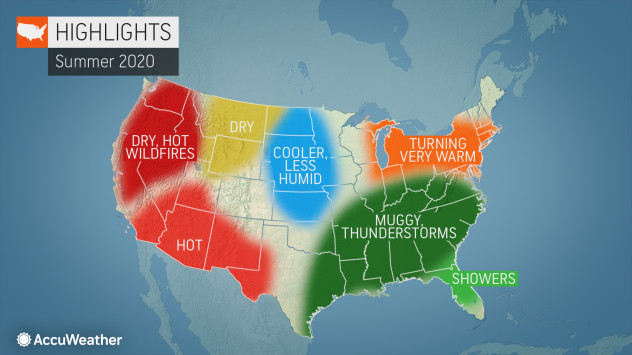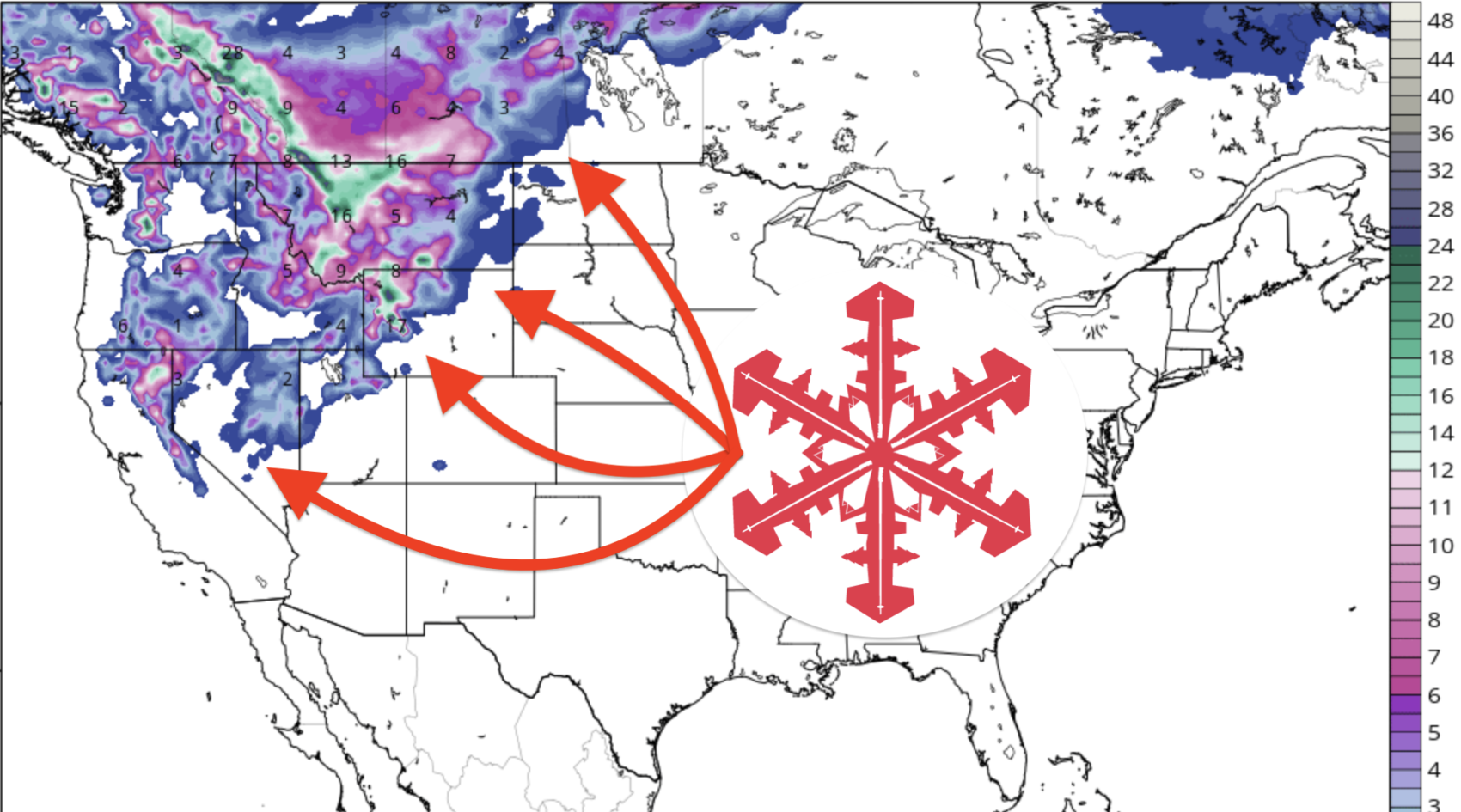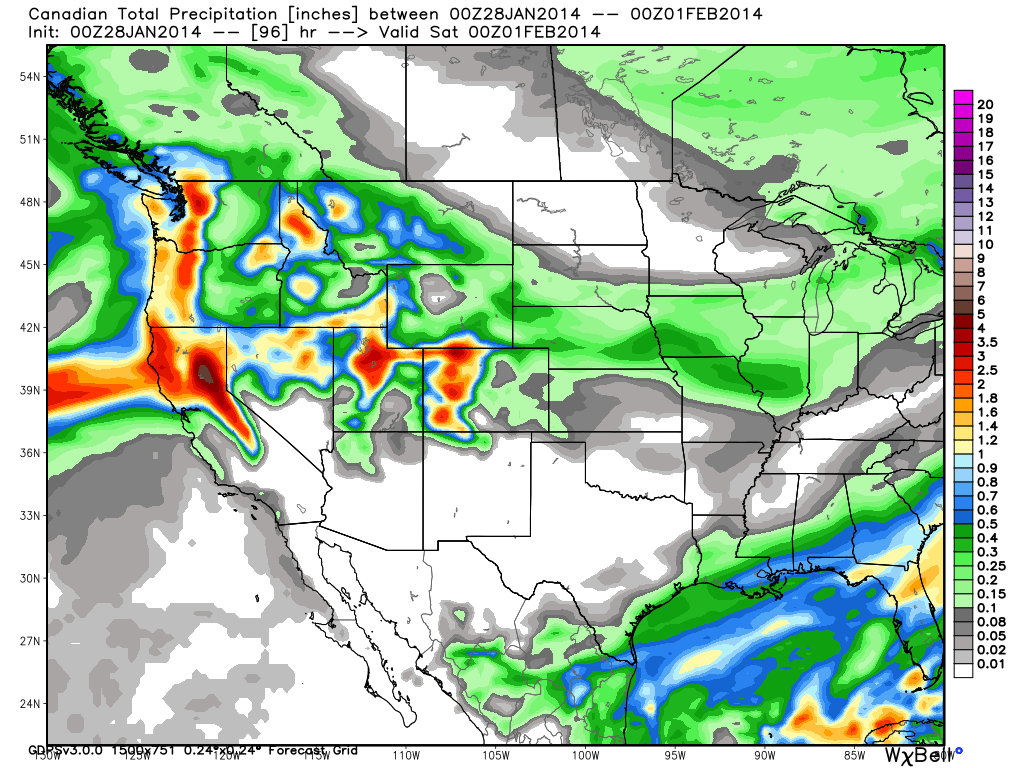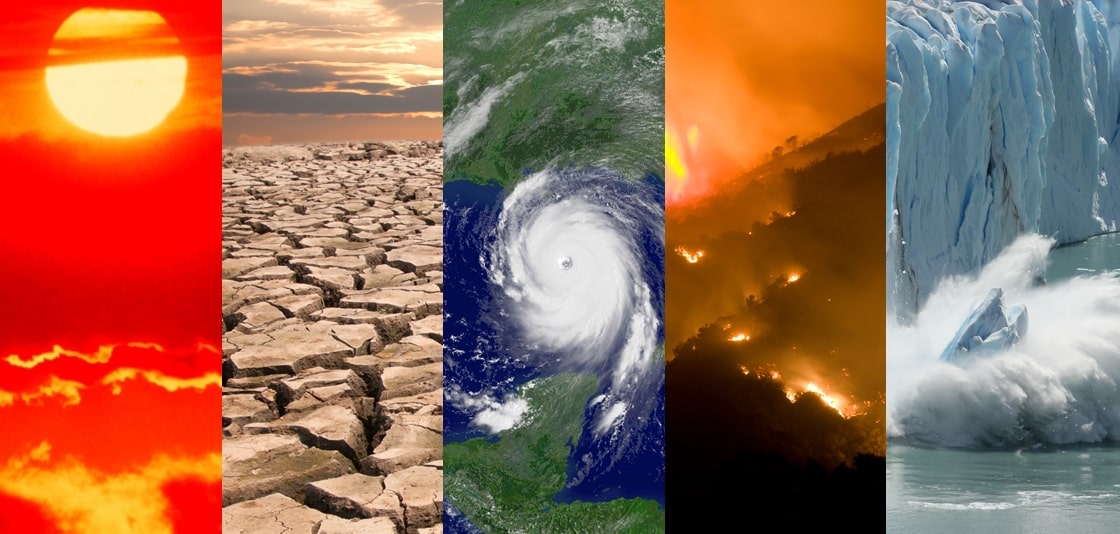
April became the third month in a row to rank second-hottest on record for the globe after the year kicked off with the hottest January ever recorded in 141 years of record-keeping, according to scientists from NOAA’s National Centers for Environmental Information.
It was also the second-warmest year to date (January through April), as Arctic sea ice continued its retreat.
Below are highlights from NOAA’s latest monthly global climate report:
Climate by the numbers – April 2020
- The average global temperature in April was 1.91 degrees F (1.06 degrees C) above the 20th-century average, making April 2020 the second-hottest behind April 2016.
- The eight warmest Aprils have all occurred since 2010, and April 2020 marked the 44th consecutive April above the 20th-century average.
Year to date | January through April
- The global temperature from January through April was 2.05 degrees F (1.14 degrees C) above average, which is the second-hottest January-through-April period on record behind 2016.
- Europe and Asia had their warmest year to date on record, while the Caribbean region and South America had their second warmest. No land or ocean areas had record-cold temperatures.
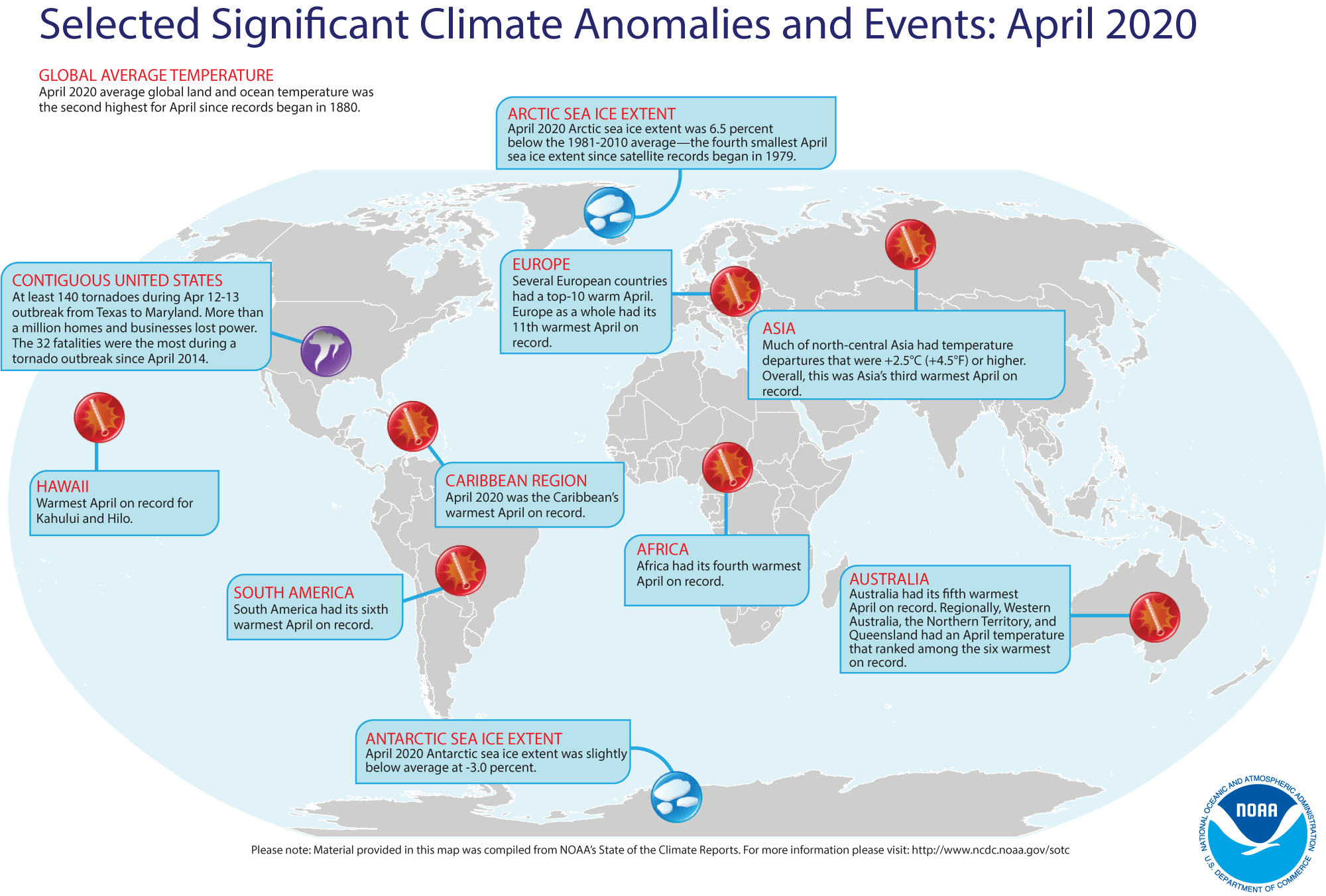
More notable climate events in the April report:
- Ocean temperatures were historically hot: The global ocean surface temperature during April 2020 was 1.49 degrees F (0.83 of a degree C) above the 20th-century average. It was the highest April ocean temperature since global records began in 1880.
- Arctic sea ice was down substantially: Sea ice coverage for April 2020 was 6.5% below the 1981–2010 average and the fourth-smallest April extent on record for the Arctic.

